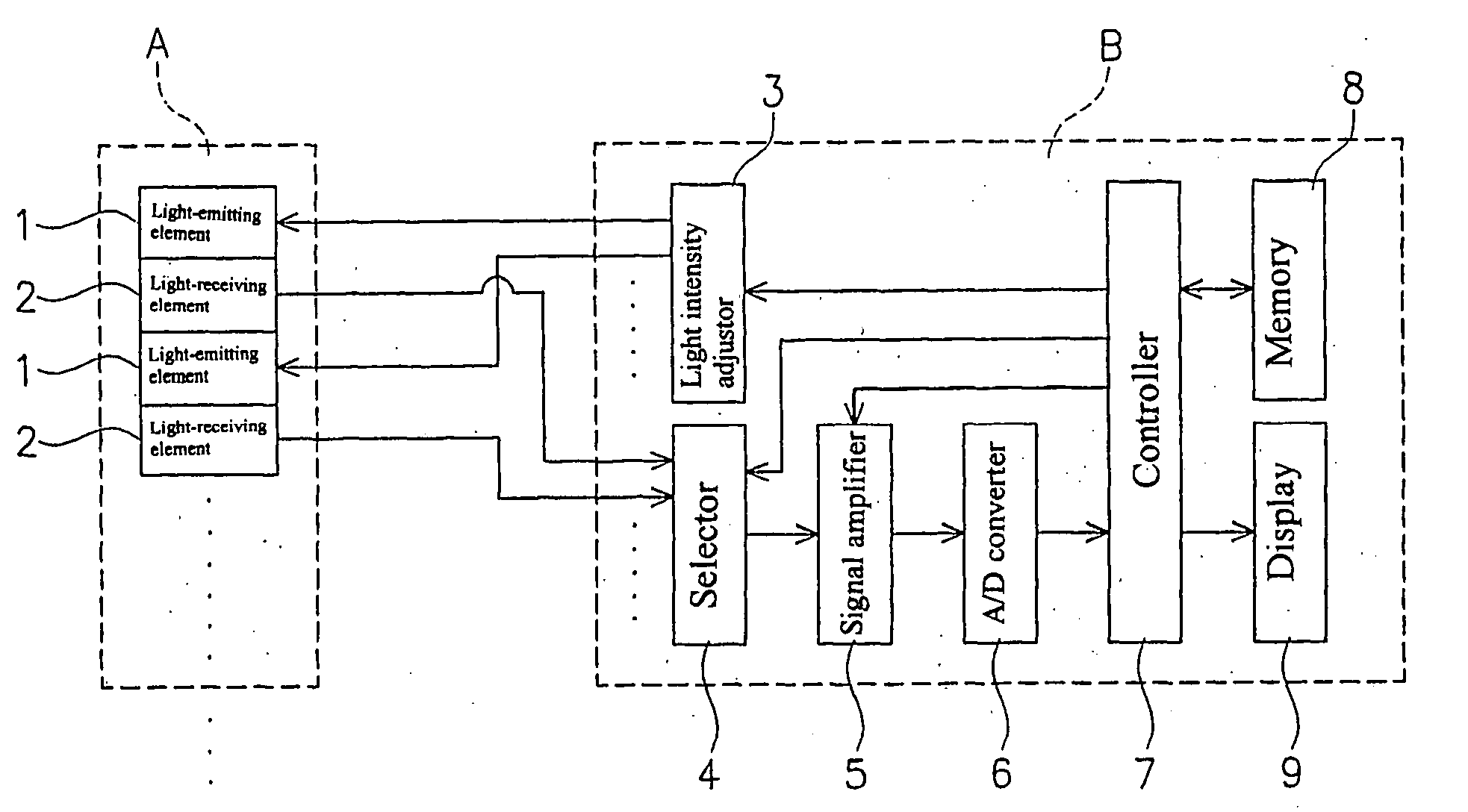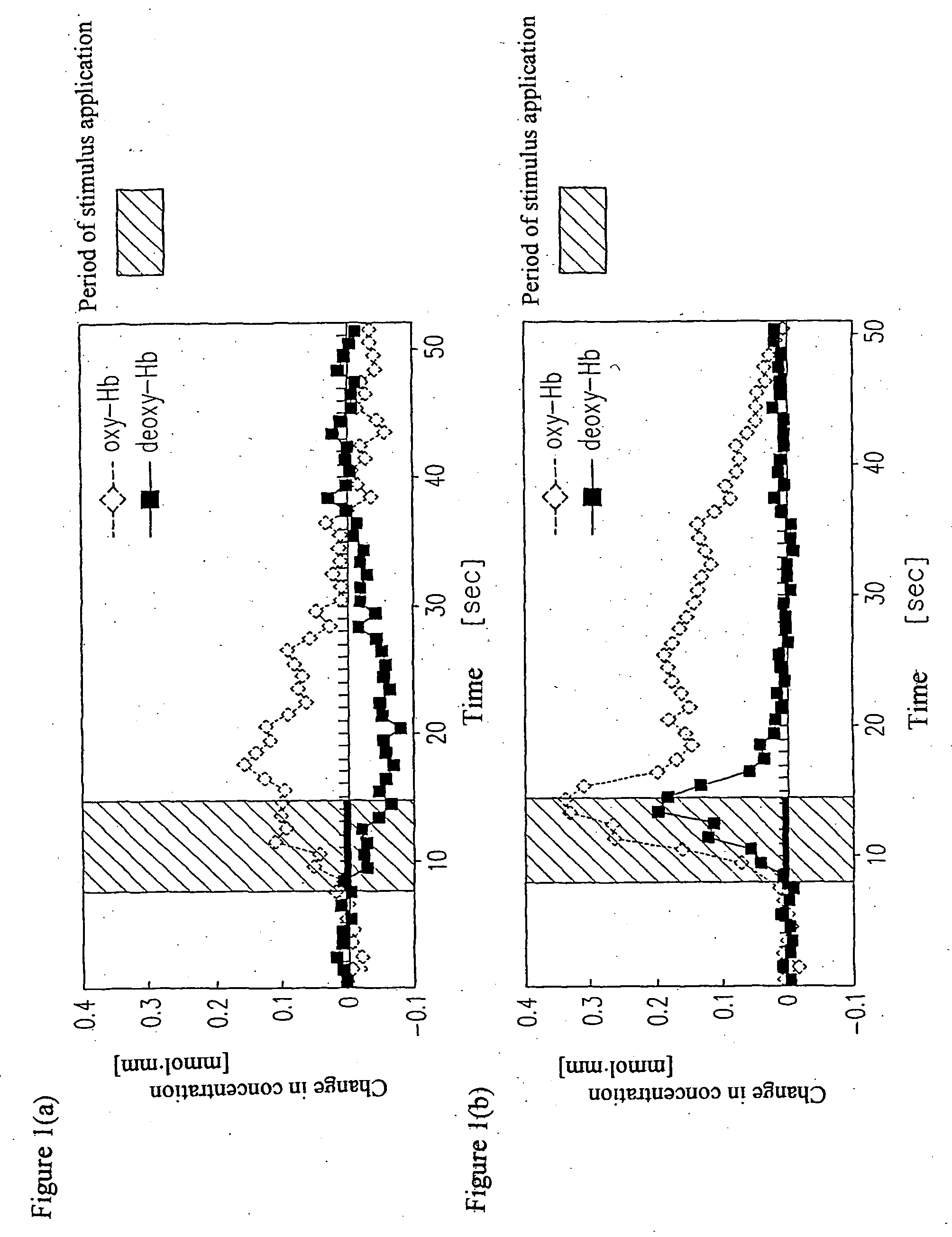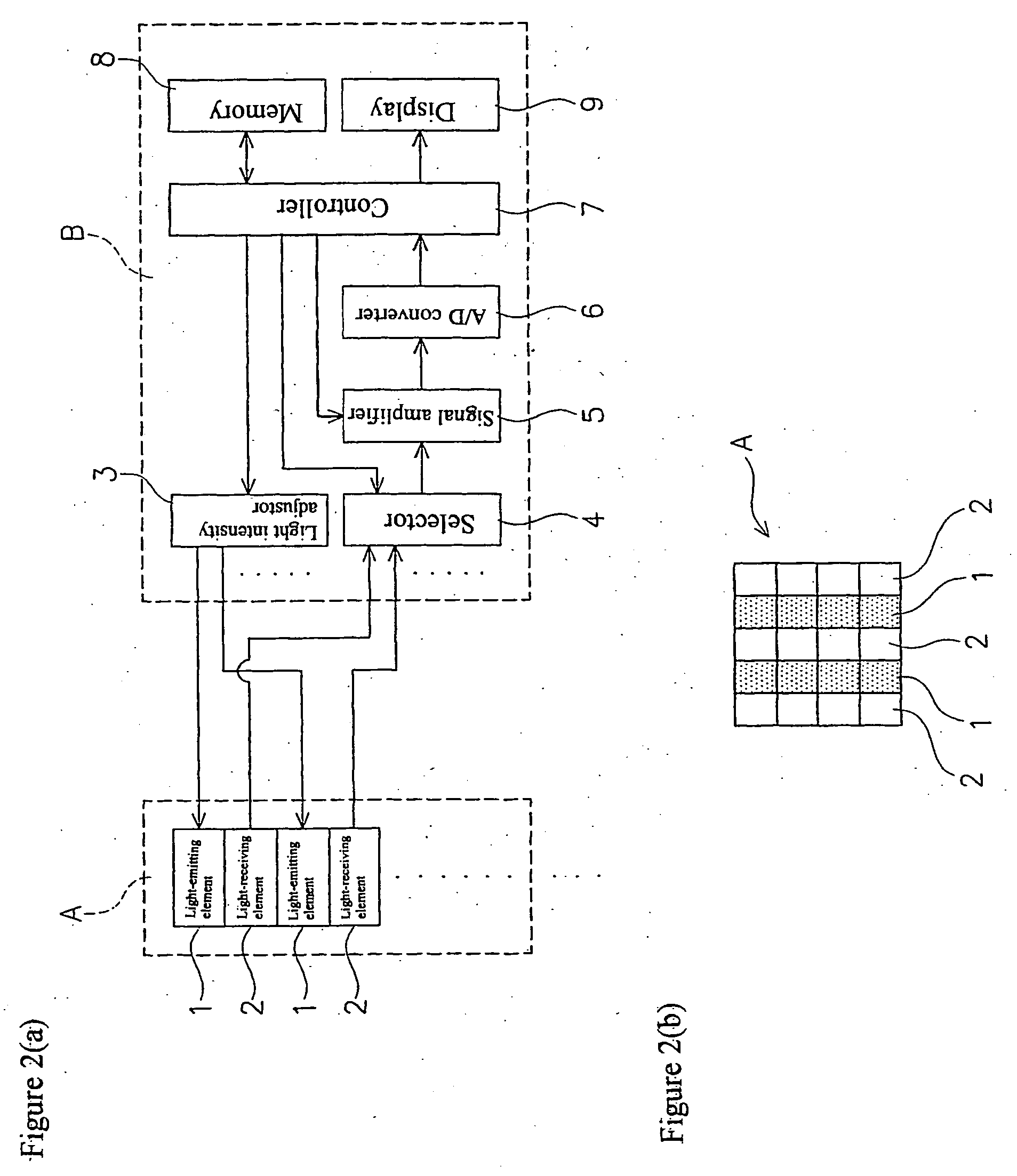Apparatus for evaluating biological function
- Summary
- Abstract
- Description
- Claims
- Application Information
AI Technical Summary
Benefits of technology
Problems solved by technology
Method used
Image
Examples
Embodiment Construction
[0028] One working embodiment of the apparatus for evaluating biological function of the present invention is described below, with reference to the drawings.
[0029]FIG. 2(a) shows a block diagram of the apparatus for evaluating biological function of the present working embodiment. This apparatus for evaluating biological function is roughly divided into a plurality of probes A . . . and the main body of the apparatus B. Probe A is composed of at least two light-emitting elements (light-emitting diodes) 1 . . . that irradiate light to desired measurement sites (tissue) of a living body, and at least two light-receiving elements (photodiodes) 2 . . . that sense light, e.g., transmitted, reflected, scattered or diffused light, from the measurement site after it has interacted with the living body. The main body of the apparatus B is composed of a light intensity adjustor 3 that adjusts the intensity of the light emitted from light-emitting elements 1 . . . ; a selector 4 that selecti...
PUM
 Login to View More
Login to View More Abstract
Description
Claims
Application Information
 Login to View More
Login to View More - R&D
- Intellectual Property
- Life Sciences
- Materials
- Tech Scout
- Unparalleled Data Quality
- Higher Quality Content
- 60% Fewer Hallucinations
Browse by: Latest US Patents, China's latest patents, Technical Efficacy Thesaurus, Application Domain, Technology Topic, Popular Technical Reports.
© 2025 PatSnap. All rights reserved.Legal|Privacy policy|Modern Slavery Act Transparency Statement|Sitemap|About US| Contact US: help@patsnap.com



